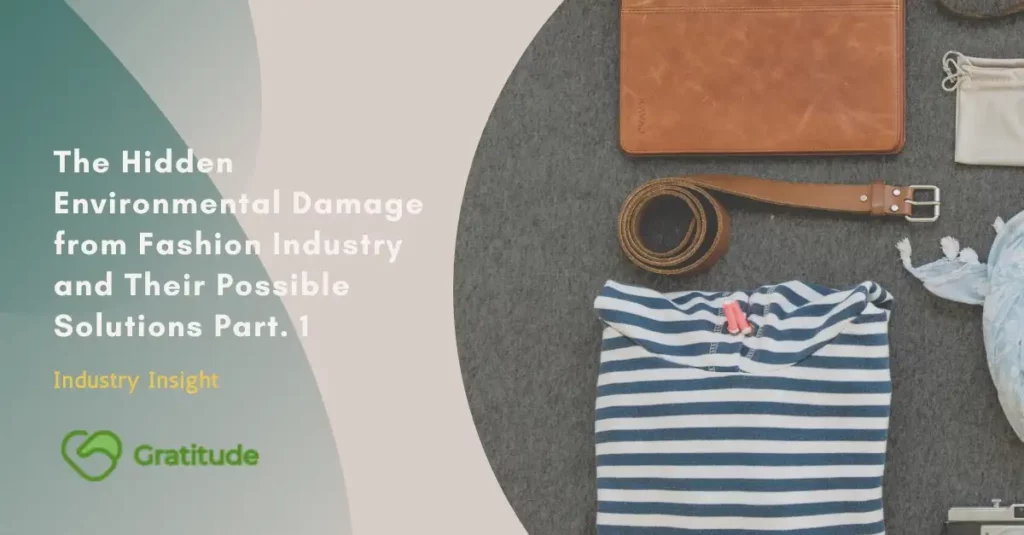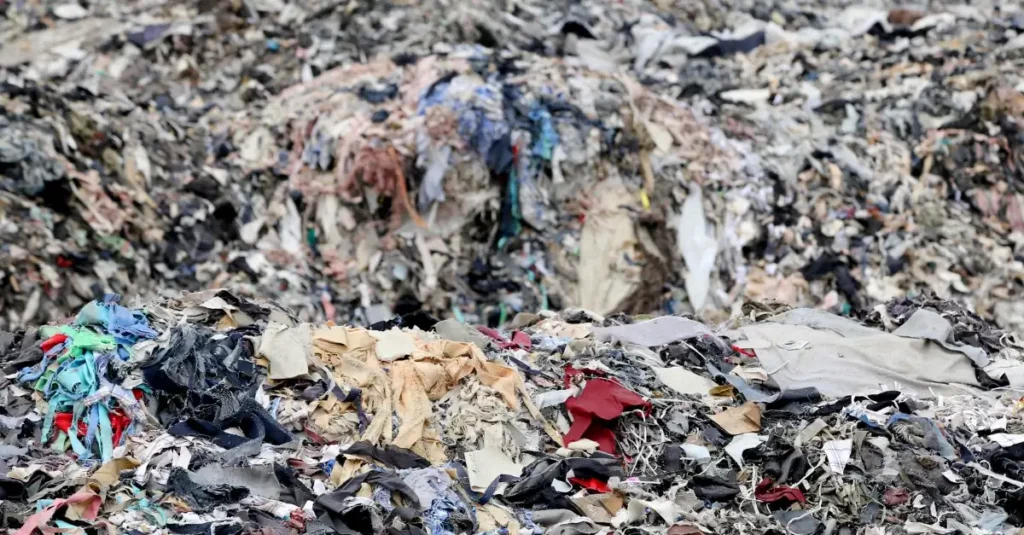
Fashion industry is the second largest polluter in the world right behind fossil fuels. Currently, the fashion industry contributes 10% to the planets carbon emissions. By 2050, it’s estimated that the fashion industry will be contributing 25% of the worlds carbon emissions. And environmental damage increases as the industry grows.
However, there are solutions and alternatives to alleviate these problems. But the first step is to develop awareness and the will to change and awareness comes from knowing the problem. Let us learn how or where does the fashion industry has left their marks :
1. Waste Problem

Clothing has clearly become disposable. As a result, we generate more and more textile waste. A family in Europe throws away an average of 11 kg of clothing each year. Only 15% is recycled or donated, and the rest goes directly to the landfill or is incinerated.
Synthetic fibers, such as polyester, are plastic fibers, therefore non-biodegradable, and can take up to 200 years to decompose. Synthetic fibers are used in 69% of our clothing.
Possible Solutions
1. Avoid Fast Fashion brands as they are tend to focus on quantity and speed thus increase the excess waste produced
2. Shop for brands that has recycle or upcycle program
3. Shop for brands that use less or minimalistic packaging
2. Chemical Problem

Chemicals are one of the main components in fashion industry. They are used during fiber production, dyeing, bleaching, and wet processing of each garments.
The heavy use of chemicals in cotton farming is causing diseases and premature death among cotton farmers, along with massive freshwater and ocean water pollution and soil degradation. Some of these substances are also harmful to the consumer as prolonged exposure to synthetic dye may cause health issue ranging from rashes to skin cancer.
Possible Solutions
1. Choose organic fibers, as it tends to use little to no chemical for growing
2. Choose sustainable brands. Effort that these type of brands are doing to prevent usage of chemical may varies. Some may opt-in to use natural dye instead of synthetic, some may use organic fiber, and many more sustainable steps for their brands.
3. Look for garments with certification label controlling chemical content such as OEKO-TEX®, GOTS, or BLUESIGN®
3. Greenhouse Gases Emission Problem

The fashion industry accounts for between 5% and 10% of global greenhouse gas emissions. The global fashion industry is generating a lot of greenhouse gases due to the energy used during its production, manufacturing, and transportation of the million garments purchased each year.
Synthetic fibers (polyester, acrylic, nylon, etc.), used in the majority of our clothes, are made from fossil fuel, making production much more energy-intensive than with natural fibers.
Also, according to James Conca from FORBES: “ Cheap synthetic fibers also emit gases like N2O, which is 300 times more damaging than CO2.”
Possible Solutions
1. Choose natural fibers. Fibers such as bamboo cotton or non-polyesther tend to use less oil to produce, cutting carbon footprint on the production process.
2. Avoid Fast Fashion. Again, mass produce clothings that pursue quantity instead of quality is not only producing physical clothing waste, but they use much more energy to produce.
All of the solution mentioned above require true transparency to make sure that the solutions are carried on reliably instead of just becoming a marketing ploy. Hence brands required to implement to provide transparency to the customers that easily accessible and highly credible.
For that purpose, Gratitude enables businesses to become transparent by being powered by blockchain technology, with easy-to-use tools to record their supply chain, narrate the story, verify on blockchain and present the data in a beautiful landing page that can be issued via Gratitude’s QR Code or URL that can be placed on a physical product or embedded on digital marketing campaign. Customers can then simply scan the QR codes placed on the product or click the link on a digital campaign and clearly see the product’s journey, verify sustainability claims, or any supply chain data that the company wants to reveal to the customer.
Begin your business’ true transparency journey by implementing Gratitude to unlock the hidden value of your supply chain data. Talk to our representatives via the following channels for support or assistance in implementation:
Website : https://more-gratitude.com
Twitter : https://www.twitter.com/more_gratitude
Linkedin : https://www.linkedin.com/company/more-gratitude
Instagram : https://www.instagram.com/more_gratitude/
Facebook : https://www.facebook.com/followgratitude
Medium : https://www.medium.com/@more_gratitude
Sign up to our exclusive newsletter for special offers and latest industry insight :

